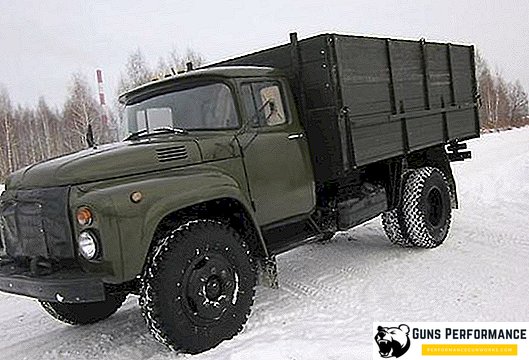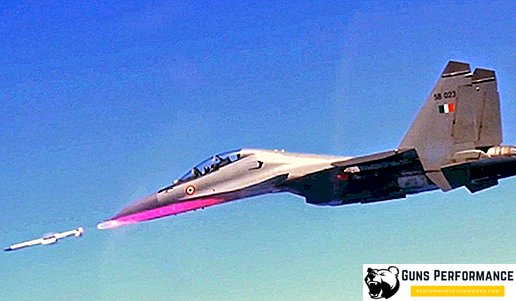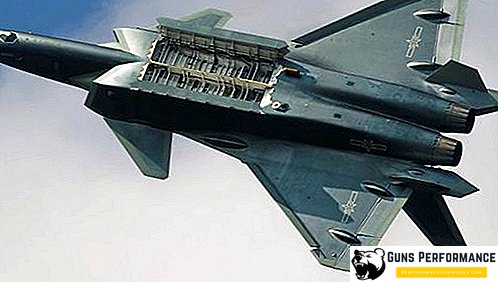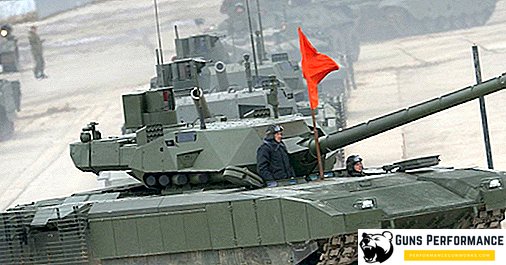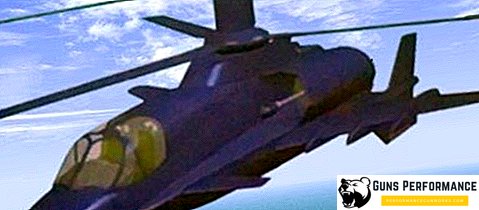Air defense is a set of steps and b / troop actions against the enemy’s air attack means in order to avert (reduce) losses among the population, damage to objects and troop groups from air strikes. Air defense systems are being formed to repel (disrupt) attacks (attacks) of the air enemy.

The full range of air defense systems covers:
- Air enemy reconnaissance; warning actions of the troops about him;
- Fighter aircraft barrier;
- Anti-aircraft missile and artillery barriers;
- EW organizations;
- Masking;
- Managerial, etc.
Air defense happens:
- Zonal - to protect individual areas within which the cover objects are located;
- Zonal-object-to combine the zonal air defense with a direct barrier of particularly important objects;
- Objective - for the defense of certain very important objects.
World experience of wars has turned air defense into one of the most important components in a general battle. In August 1958, air defense forces of the ground forces were formed, and later the army air defense of the RF Armed Forces was organized.
Until the end of the fifties, air defense systems of the NE were equipped with anti-aircraft art complexes of that time, as well as specially designed transportable anti-aircraft missile systems. Along with this, in order to reliably cover troops in mobile-action combat, it was necessary to have highly mobile and highly effective air defense missile systems, due to the increase in capabilities of air attack assets.
Together with the combat of tactical aviation, the air defense forces of the ground forces also attacked combat helicopters, unmanned and remotely piloted aircraft, cruise missiles, and also strategic enemy aircraft.

In the mid-seventies, the organization of the first generation of anti-aircraft missiles of the air defense forces ended. The troops received the newest air defense missiles and the famous ones: “Circles”, “Cubes”, “Osa-AK”, “Arrows-1 and 2”, “Shilki”, new radars and many other new ones of that time. Almost all aerodynamic targets were easily affected by the formed anti-aircraft missile systems, so they took part in local wars and armed conflicts.
By that time, the newest means of air attacks had rapidly developed and improved. These were tactical, operational-tactical, strategic ballistic missiles and precision weapons. Unfortunately, the weapons systems of the first generation of the air defense forces did not provide solutions to the tasks of covering the military groups from attacks with these weapons.
There was a need to develop and apply systemic approaches to arguing the classification and properties of second-generation weapons. It was necessary to create weapons systems, balanced according to the classifications and types of targets to be hit, and the list of air defense systems combined into a single control system equipped with radar reconnaissance, communications and technical equipment. And such weapons systems created. In the eighties, the air defense forces were fully provided with C-Z00V, "Torah", "Bukami-M1", "Strelami-10M2", "Tunguskami", "Needles" and the latest radar.
Changes took place in anti-aircraft missile and anti-aircraft missile and artillery units, units and formations. They became integral parts in combined arms formations from battalions to front-line unions and became a single air defense system in military districts. This increased the effectiveness of combat applications in the groups of air defense troops of the military districts and provided the echeloned power of fire impact on the enemy with high density of fire from anti-aircraft guns at heights and distances.

In the late nineties, in order to improve the command, in the air defense forces of the Ground Forces, formations, military units and air defense units of the Coast Guard of the Navy, military units and air defense units of the Airborne Forces, and in the formations and military units of the Air Defense of the reserve of the Supreme Commander. They were united in the military air defense of the RF Armed Forces.
Tasks of military air defense
The formations and units of military air defense systems are assigned tasks assigned to them to interact with the forces and means of the Armed Forces and the Navy.
The following tasks are assigned to military air defense:
In peacetime:
- Measures to maintain air defense forces of military districts, formations, units and subunits of the Coast Guard Navy, air defense units and subunits in combat readiness for advanced deployments and reflections, along with air defense forces and equipment;
- Performing b / on duty within the zone of the military districts and in the general air defense systems of the state;
- The sequence of the build-up of combat units in the air defense units and units that perform tasks on combat duty when the highest degrees of readiness are introduced.
In wartime:
- Arrangements for complex, deep-echeloned cover from attacks by means of air attacks by the enemy on groups of troops, military districts (fronts) and military objects throughout the depth of their operational constructions, while interacting with forces and means of air defense;
- Direct cover measures, which include combined-arms unions and formations, as well as formations, units and units of the Coast Guard of the Navy, airborne units and units, rocket forces and artillery in the form of groups, aviation aerodromes, command posts, the most important rear facilities in concentration areas, during nomination, occupation of the specified zones and during operations (b / actions).
Directions of improvement and development of military air defense
The air defense forces of the SV today are the main and most numerous component of the military air defense of the RF Armed Forces. They are united by a coherent hierarchical structure with the inclusion of front-line, army (corps) air defense force complexes, as well as air defense units, motorized rifle (tank) divisions, motorized rifle brigades, air defense units, motorized rifle and tank regiments, battalions.
The air defense forces in military districts have air defense units, units and subunits that have different anti-aircraft missile systems / complexes at their disposal.
They are connected by intelligence-information complexes and control complexes. This makes it possible in certain circumstances to form effective multifunctional air defense systems. Until now, the Russian military air defense weapons are among the best on the planet.

The most important areas in the improvement and development of military air defense systems in total include:
- Optimization of organizational and staff buildings in control bodies, formations and air defense units, respectively, assigned tasks;
- Modernization in anti-aircraft missile systems and complexes, reconnaissance equipment in order to extend the time of exploitation and their integration with the unified aerospace defense system in the state and in the Armed Forces, with endowing them with the functions of non-strategic anti-missile weapons in theaters of operations;
- The development and maintenance of a uniform technical policy to reduce types of weapons, w / equipment, their unification and the avoidance of duplication in development;
- Provision of advanced weapons systems of air defense with the latest means of automation by control, communications, active, passive and other non-traditional types of intelligence, multipurpose anti-aircraft missile systems and ZRK complexes of new generation using the criteria of "effectiveness - cost - feasibility";
- Conducting a complex of collective combat training of air defense with other troops, taking into account the upcoming combat missions and features of the deployment areas, while concentrating the main efforts in the preparation of high-readiness units, units and subunits;
- Formation, maintenance and preparation of reserves for a flexible response to changes in circumstances, strengthening of groups of air defense forces, replenishment of losses of personnel, weapons and military equipment;
- Improving the training of officers in the structure of the military training system, an increase in the level of their fundamental (basic) knowledge and practical training and consistency in the transition to continuous military education.
It is planned that in the near future, one of the main directions in the strategic defense of the state and in the Armed Forces will be occupied by the aerospace defense system, it will become one of the component parts, and later it will become almost the main deterrent in unleashing wars.

Air defense systems are among the fundamental ones in the aerospace defense system. To date, units of military air defense systems are able to effectively resolve tasks for anti-aircraft and, to some extent, non-strategic anti-missile defensive measures in the groupings of troops in operational-strategic areas. As practice shows, during tactical exercises with the use of live firing, all available means of military air defense of Russia are able to hit cruise missiles.
Air defense systems in the aerospace defense system of the state and in its Armed Forces tend to grow in proportion to the increase in threats of air attacks. When resolving the tasks of the aerospace defense organization, a coordinated general use of the multi-aspect air defense and rocket-space defense troops in operational-strategic areas will be required as the most effective than the individual. This will occur due to the possibility, under a single plan, and under unity of command to combine strength together with the advantages of multiple weapons and the mutual compensation of their shortcomings and weaknesses.

Improvement of air defense systems is impossible without further modernization of existing weapons, re-equipment of air defense forces in military districts with the most modern air defense systems and air defense missile systems, with the delivery of the latest automated control systems and communications.
The main direction in the development of Russian air defense systems today is:
- To continue development work in order to create high-performance weapons that will have quality indicators that could not be surpassed by foreign counterparts for 10-15 years;
- Create a promising multifunctional weapons system of military air defense. This will give impetus to create a flexible organizational structure for the implementation of specific b / tasks. Such a system needs to be integrated with the main armaments of the ground forces, and to act comprehensively with other types of troops in the course of solving air defense tasks;
- Introduce automated control complexes with robotization and artificial intelligence to reflect further building up the potential of adversaries and increase the effectiveness of used applications by the air defense forces;
- Provide samples of air defense armaments with electron-optical devices, television systems, thermal imagers to ensure the combat effectiveness of air defense systems and air defense missiles in conditions of intense interference, which will minimize the dependence of air defense systems on the weather;
- Widely apply passive location and EW facilities;
- Reorient the concept of the prospects for the development of weapons and air defense equipment, to carry out a radical modernization of existing weapons and equipment to give a significant increase in the effectiveness of combat use at low cost.
Air Defense Day

Air Defense Day is a memorable day in the Russian Armed Forces. It is celebrated every year, every second Sunday in April, in accordance with the Decree of the Russian President dated May 31, 2006.
For the first time this holiday was determined by the Presidium of the Supreme Soviet of the USSR in the Decree of February 20, 1975. It was established for the outstanding services that were shown by the Soviet air defense forces during the Second World War, as well as for the fact that they carried out particularly important tasks during peaceful hours. It was originally celebrated on April 11, but in October 1980, Air Defense Day was postponed to celebrate its second Sunday in April.
The history of the establishment of the date of the holiday is connected with the fact that, on the April days, the most important Government decrees were adopted on the organization of the state’s air defense, which became the basis for building the air defense systems and determined the organizational structure of its members, their formation and further development.
In conclusion, it is worth noting that as the threats of air attacks increase, the role and importance of military air defense will only increase, which has already been confirmed by time.



